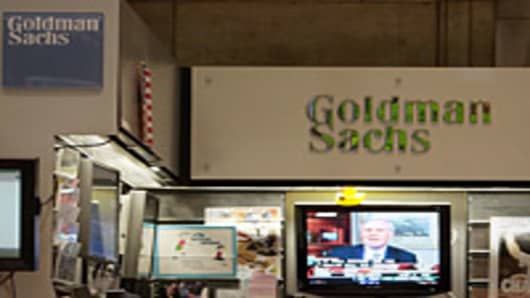Goldman Sachs is facing a threat by the Financial Crisis Inquiry Commission to bring in outside accountants to comb through the bank’s systems for data on its derivatives business, the panel’s chairman has said.
The commission will not back down from demands for information Goldman’s executives have maintained they do not track, Phil Angelides told the Financial Times.
"We have a deep level of questioning about whether we’re getting the straight scoop here and whether Goldman is working with us on information that they surely have," Mr Angelides, chairman of the US Congress-appointed commission.
His comments mark the latest episode in the dispute between Goldman and the commission, which has scolded the bank for its “abysmal” response to the inquiry. The frustration of FCIC members was evident several weeks ago when two of Goldman’s executives, Gary Cohn, president, and David Viniar, chief financial officer, told the panel the bank’s accounting systems did not break out trading revenue generated strictly from derivatives.
They maintained that such information would give little insight into the bank’s trading risks as many trades involving a derivative contract also include an offsetting cash security. For instance, Goldman might buy a credit default swap to hedge against the possible default of a company where the bank also has a position in its debt. Tracking the revenue of one slice of a trade would ignore whatever gains or losses were booked on the other side, the bank said.
"We continue to work with the FCIC and their staff," Mr Viniar told the FT last week.
On Friday, people familiar with the matter said Goldman had fulfilled another request by the FCIC– giving it a list of counterparties from which the bank bought credit insurance on AIG, the US insurer.
Mr Angelides said he remained sceptical that Goldman did not have the derivatives information, given the bank’s reputation for risk management and its discipline in marking the value of every position daily. "It’s not credible that that’s a black hole," Mr Angelides said. "It defies logic that these institutions have no clue of how much money they are making or losing from these derivatives."
The information was vital, he said, because it would help explain how Wall Street had evolved along with the use and complexity of derivatives. “These banks have become trading operations,” he said. “This is essential information. It’s the centre of their business."
That is the problem, said Brad Hintz, an analyst with Sanford Bernstein. The ubiquity of derivatives changed the way banks tracked trading risks and, eventually, how they structured their businesses.
"Over the years the model of a separate derivatives book became a very dated model for trading," Mr Hintz said. "Can I really take the profitability of the corporate bond desk out of the derivatives desk?"
Mr Hintz, an analyst at Sanford Bernstein, estimated that derivatives accounted for about 15 per cent of Wall Street’s fixed-income trading business and 20 per cent of equities trading.
"We’ll pursue all of our options," Mr Angelides said. "We’re going to continue to press this very hard."


